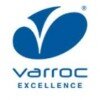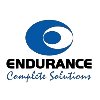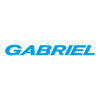Filter interviews by
Mahle Anand Thermal Systems Senior Manager Quality Interview Questions, Process, and Tips
Mahle Anand Thermal Systems Senior Manager Quality Interview Experiences
1 interview found

(6 Questions)
- Q1. Which is the most important step in G8D
- Ans.
The most important step in G8D is determining the root cause of the problem.
Determining the root cause helps in addressing the underlying issue and preventing its recurrence.
It involves analyzing data, conducting investigations, and using problem-solving techniques.
Identifying the root cause enables effective corrective actions to be implemented.
Without determining the root cause, the problem may persist or reoccur.
Exa...
- Q2. What are the failure mode of inspection process
- Ans.
Failure modes of inspection process
Inadequate training of inspectors
Inaccurate or unreliable inspection equipment
Lack of clear inspection criteria or standards
Human error in the inspection process
Inefficient or time-consuming inspection methods
Failure to detect defects or non-conformities
Inconsistent interpretation of inspection results
Failure to address root causes of defects
Lack of proper documentation or record-keep
- Q3. Which is the most important step after D1 in G8D
- Ans.
The most important step after D1 in G8D is D2 - Containment
D2 - Containment is crucial to prevent further defects or issues from occurring
It involves implementing temporary measures to isolate the problem and prevent its spread
Examples of containment actions include stopping production, segregating affected products, or implementing temporary fixes
Containment helps in minimizing the impact of the problem while the root
- Q4. What are the changes you brought into the system in last two years
- Ans. You can share your project on pain areas of organizational requirements
- Q5. What are changes you brought in yourself in past two years
- Ans. You can discuss on the trainings and skill upgradations you did.
- Q6. How do you improve RED suppliers quality performance
- Ans.
To improve RED suppliers quality performance, implement a comprehensive supplier development program.
Conduct regular supplier audits to identify areas for improvement
Provide training and support to suppliers to enhance their quality management systems
Establish clear quality standards and expectations for suppliers
Implement a supplier performance tracking system to monitor progress
Collaborate with suppliers to address r...
Interview Preparation Tips
Top trending discussions






Interview questions from similar companies

I applied via Recruitment Consulltant and was interviewed before Jul 2021. There were 2 interview rounds.

(3 Questions)
- Q1. Basic information about current role and responsibilities
- Q2. Why you want to change the current company
- Q3. Family background and qualifications
Interview Preparation Tips

I applied via Referral and was interviewed in Aug 2018. There were 2 interview rounds.
Interview Preparation Tips
Experience: By skill specialist & interview call;regarding knowledge of domain.
General Tips: Krishna maruti group is very excellent place of working.big group..many plants..zero tension of job security..means a viable place to do long service.no late sitting..
Culture is greater govt.than central govt offices.
Negative is higher mismatch between ctc & in hand.
10% of basic they deduct for superannuation fund from AM level..which is unaccountable.
Avg..1000rs deduction for lunch mandatory for bad canteen good & uniform deduction.
I means to say ,anybody should discuss only in hand salary during interview.means a monthly ctc of 60k became 45k & avg 4.5k will never receive(lunch/uniform/s.a.)
Duration: <1 week

I applied via Company Website and was interviewed in Dec 2023. There was 1 interview round.
(1 Question)
- Q1. Basic thing related to SCM

I applied via Referral and was interviewed before Feb 2023. There was 1 interview round.
(2 Questions)
- Q1. Which datasources are support in powerapps?
- Ans.
PowerApps supports various datasources including SharePoint, SQL Server, Excel, Common Data Service, and more.
SharePoint
SQL Server
Excel
Common Data Service
Dynamics 365
Salesforce
- Q2. Sharepoint, excel,SQL server , Microsoft dynamics and other CRM database
Skills evaluated in this interview

I applied via Naukri.com and was interviewed in Feb 2022. There was 1 interview round.
(1 Question)
- Q1. What is your achievement
Interview Preparation Tips

Interview Questionnaire
1 Question
- Q1. Work in shifts, Qcc , Line balancing , Kaziens , Achievement in your experience individually and in team .

I appeared for an interview in Mar 2025, where I was asked the following questions.
- Q1. Work experience
- Q2. Strategic planning

I appeared for an interview before Mar 2024.
(2 Questions)
- Q1. What is biggest failure in career
- Ans.
My biggest failure in my career was not speaking up when I should have.
I failed to communicate effectively with my team on a project deadline, resulting in delays.
I did not address a performance issue with a team member early on, leading to bigger problems later.
I missed out on a promotion because I did not advocate for myself and highlight my achievements.
I did not seek help or guidance when I was struggling with a ne
- Q2. What is Gear profile
- Ans.
Gear profile refers to the shape of the teeth on a gear wheel that determines how gears mesh together.
Gear profile is the outline of the gear tooth, including the shape, size, and spacing of the teeth.
It is crucial for ensuring smooth and efficient operation of gears.
Common gear profiles include involute, cycloidal, and trochoidal.
The gear profile affects the gear ratio, speed, and torque transmission of a gear system.
(2 Questions)
- Q1. Gear Box calculation
- Q2. What is Gear geometry
- Ans.
Gear geometry refers to the shape and arrangement of the teeth on a gear.
Gear geometry includes parameters such as tooth profile, pitch, pressure angle, and helix angle.
The design of gear geometry affects the performance, efficiency, and durability of a gear system.
Examples of gear geometry variations include spur gears, helical gears, bevel gears, and worm gears.

I applied via Naukri.com and was interviewed in Sep 2021. There was 1 interview round.
Interview Questionnaire
1 Question
- Q1. All question releated to press shop and weld shop.
Interview Preparation Tips
Mahle Anand Thermal Systems Interview FAQs
Tell us how to improve this page.
Mahle Anand Thermal Systems Interviews By Designations
- Mahle Anand Thermal Systems Trainee Operating Engineer Interview Questions
- Mahle Anand Thermal Systems Oprating Engineer Interview Questions
- Mahle Anand Thermal Systems Assistant Manager Interview Questions
- Mahle Anand Thermal Systems Production Engineer Interview Questions
- Mahle Anand Thermal Systems Junior Engineer Interview Questions
- Mahle Anand Thermal Systems Senior Engineer Mechanical Interview Questions
- Mahle Anand Thermal Systems Production Manager Interview Questions
- Mahle Anand Thermal Systems Maintenance Engineer Interview Questions
- Show more
Interview Questions for Popular Designations
- Quality Engineer Interview Questions
- Quality Inspector Interview Questions
- Senior Quality Engineer Interview Questions
- Quality Controller Interview Questions
- Quality Assurance Interview Questions
- Quality Manager Interview Questions
- Quality Executive Interview Questions
- Quality Assurance Officer Interview Questions
- Show more
Mahle Anand Thermal Systems Senior Manager Quality Interview Process
based on 1 interview
Interview experience
Interview Questions from Similar Companies
|
Junior Engineer
239
salaries
| ₹2.5 L/yr - ₹4.8 L/yr |
|
Oprating Engineer
90
salaries
| ₹1.7 L/yr - ₹4 L/yr |
|
Engineer
79
salaries
| ₹3.6 L/yr - ₹6.7 L/yr |
|
Assistant Manager
72
salaries
| ₹5.8 L/yr - ₹12.5 L/yr |
|
Senior Engineer
60
salaries
| ₹4.4 L/yr - ₹7.2 L/yr |

JBM Group

Subros

Varroc Group

Endurance Technologies
- Home >
- Interviews >
- Mahle Anand Thermal Systems Interview Questions >
- Mahle Anand Thermal Systems Senior Manager Quality Interview Questions











